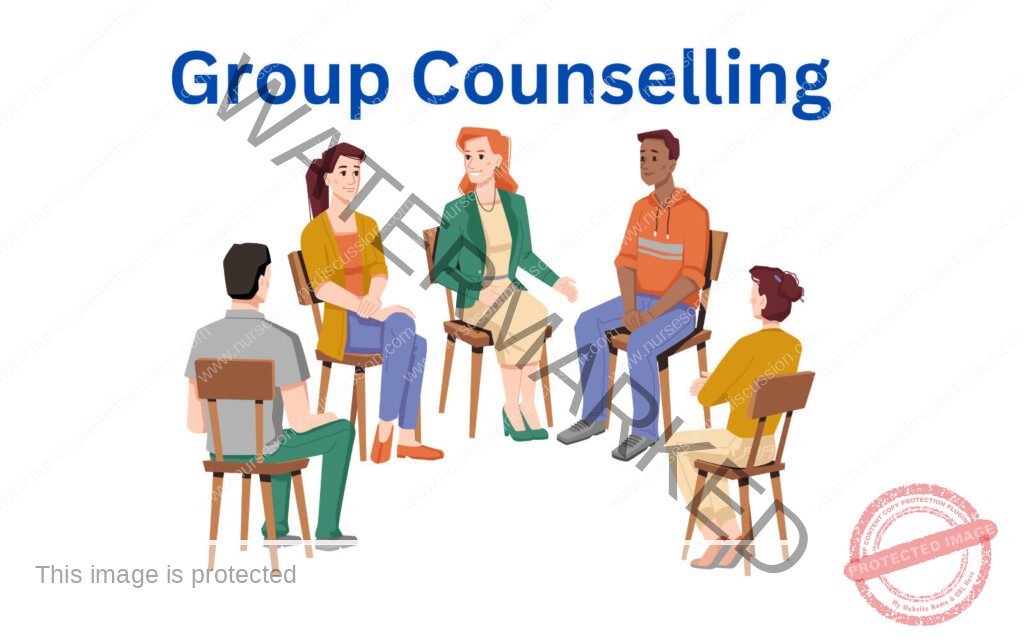Guidance and Counseling
Subtopic:
Group Counseling

What Is Group Counseling?
Group counseling is a therapeutic approach where a small group of people, led by a trained counselor, come together to talk, share, and work through common issues. These groups are built around the idea that healing and growth can happen not just through one-on-one counseling, but also through the power of shared experiences and mutual support.
It’s a space where members can connect, feel seen, and realize they’re not alone in what they’re going through.
Where It Fits in the Counseling Process
Group counseling is usually introduced during Stage Four: Intervention and Problem Solving — the point in counseling where the counselor and client have already set some clear goals. At this stage, they explore what kind of support or therapy will be most helpful, and group counseling becomes one of several options, alongside individual, couple, or family counseling.
The choice to go with group counseling is always a collaborative one. It depends on the client’s needs and whether the group setting can offer something uniquely helpful for their situation.
Why Choose Group Counseling?
There are a few things that make group counseling especially powerful:
It brings people with similar struggles together — which can be incredibly validating.
Members can share what’s worked for them and learn from others.
It’s a safe place to practice new ways of relating to people.
You get multiple perspectives, not just the counselor’s.
Some clients find that just hearing someone else say, “I feel that way too,” can be a game-changer.
Different Types of Group Counseling
Group counseling isn’t one-size-fits-all. Depending on the goals, groups can take different forms:
Psychoeducational groups teach practical skills (like managing anxiety or handling stress).
Therapy groups go deeper into emotional and relational issues, often over a longer period.
Support groups focus more on sharing and connecting around a shared experience (like grief or recovery).
Skills-building groups help people improve things like communication or emotional regulation.
How It Works
Here’s a basic outline of how group counseling typically unfolds:
Getting Ready: The counselor meets with potential members beforehand to make sure the group will be a good fit.
Starting Out: The first few sessions are about setting ground rules, building trust, and helping everyone get comfortable.
The Heart of the Work: Once members feel safe, they start opening up more, supporting each other, and exploring real issues.
Wrapping Up: Toward the end, the group reflects on what they’ve learned, celebrates progress, and talks about what’s next.
Benefits of Group Counseling
It’s usually more affordable than individual therapy.
Members often say they feel less alone and more understood.
It creates a built-in support system.
Hearing different viewpoints can lead to new insights.
Members can role-play, practice skills, and get immediate feedback.
Ethical Considerations
While group counseling can be incredibly effective, it also requires clear ethical boundaries. Some key points:
Confidentiality is crucial — and while counselors stress it, every member must agree to respect it too.
Everyone needs to give informed consent, meaning they understand how the group works, what’s expected, and what the limits are.
Counselors must ensure the group is a safe and inclusive space for everyone.
Power dynamics need to be monitored — no one should dominate or feel excluded.
The counselor sets and maintains professional boundaries, and encourages members to do the same.
When Is Group Counseling a Good Fit?
Group counseling works well when:
Clients are dealing with issues that others might also be facing (like anxiety, addiction, or relationship challenges).
They could benefit from hearing how others cope or from practicing social skills.
They’re open to learning from peers as well as the counselor.
They’re not in immediate crisis and are stable enough to engage in a group setting.
Get in Touch
(+256) 790 036 252
(+256) 748 324 644
Info@nursesonlinediscussion.com
Kampala ,Uganda
© 2025 Nurses online discussion. All Rights Reserved Design & Developed by Opensigma.co

